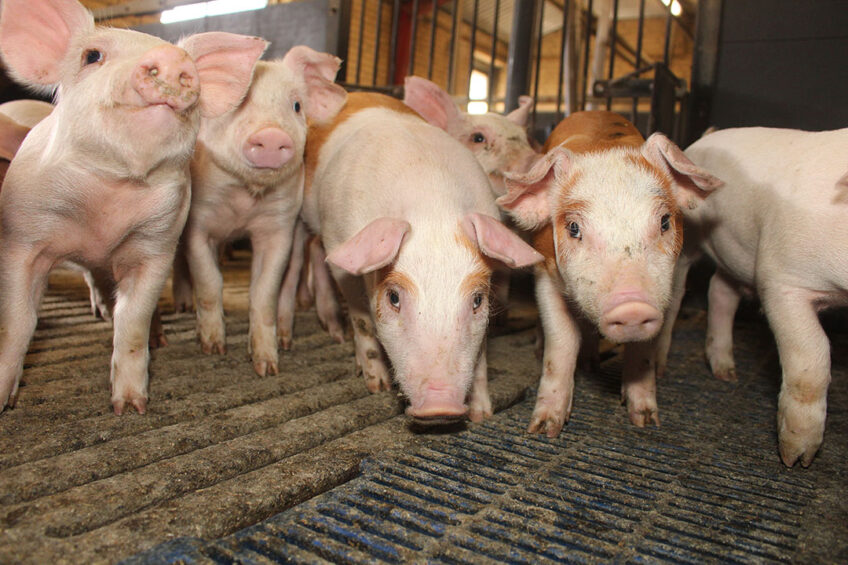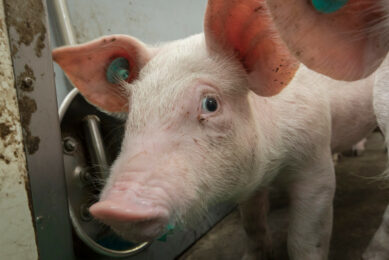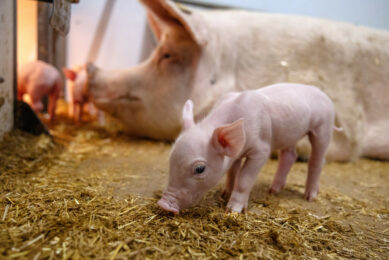5 considerations for weaning without zinc oxide

Denmark was 1 of the countries embracing the European Union goal of finding alternatives to the medical use of zinc oxide during the weaning of piglets. There is consensus that no silver bullet exists for this challenge. What lessons have been learned so far?
The “big race” basically started in 2017. That is when the 2022 ban of therapeutic levels of zinc oxide was announced in the EU. It was a big sprint to find ways to successfully have newly weaned piglets gain weight at good rates while avoiding the diarrhoea commonly caused by microbes previously controlled by zinc oxide.

No one-on-one solution
Dr Kristina Sørensen is the product manager at Denmark-based pre-mix company Vilomix (part of the Special Feed division in Danish Agro). She has been involved in this big race, by researching best practices with her colleagues since the zinc oxide ban was announced 6 years ago.
“Everyone was looking at how to do this, what to do, what products to use, what management tools should be used and so on,” she remembers. “Everyone all over the world had meetings and summits to discuss solutions and present findings. As we are a pre-mix producer, a long line of ingredient producers was knocking on our door talking about their products and suggesting one-on-one solutions to replace zinc oxide. But within our company we knew there would be no one-on-one solution.”
Broad approach to replace zinc oxide for weaning
Success would be found in using a broad approach. “Several years ago, I put a project together focusing on what adjustments would be needed in piglet feeding and rearing, focused on animal health and hygiene,” she explains. “We have shared a lot of knowledge from that with our customers.” Results of the project can be viewed in Table 1.
She notes that while some Danish pig farmers have made the adjustment better than others. As a group they were generally well prepared to make the changes compared to pig farmers in many other countries. That is because in Denmark, the swine industry already had a lot of experience making management changes to phase out the use of in-feed antibiotics for growth promotion and disease prevention back in 2000.
 Barn hygiene is critical
Barn hygiene is critical
Looking at the piglet care changes needed in the post–zinc oxide era, research by Dr Sørensen and her colleagues has clearly shown that good barn hygiene is critical. This is supported by the success on some farms in Denmark from 2019 onwards. “We need to clean, disinfect and dry the barn thoroughly before piglet arrival. The drying is very, very important. If the farmer is in a rush and the barn is left somewhat damp and cold, then when the heat is turned up as the piglets arrive, the bacteria that survived will grow.
“The water pipes also need to be clean. The water must be ‘human clean’ or you are going to be providing microbes all the time.”
 Attention to protein source
Attention to protein source
Dr Sørensen and her colleagues also found that lowering the crude protein by 10–12% helps prevent diarrhoea (for several reasons that would need detailed explanation).
In addition, to prevent diarrhoea and support good maturation of the gastrointestinal (GI) tract, the overall diet and the protein source within it should be of high quality and easily digestible. Soy protein concentrate is one good option. Danish farmers however are also feeding weaned piglets potato protein. They also feed them milk products such as skim milk powder and porcine blood plasma.
These high-quality feeds are generally more costly. That is counterbalanced by significant savings in diarrhoea treatment and better steady weight gain. These feeds also prevent damage to the stomach and the GI tract. This generally affects a pig all the way through to the finisher stage.
 Immediate and continued feeding
Immediate and continued feeding
High-quality feed has no benefits if piglets do not eat. Dr Sørensen and her colleagues have shown the critical importance of immediate piglet feed intake. “The piglets are stressed due to being weaned. They are now mixed with pigs from other litters and from different microbial environments, they may fight, and they do not have their mother telling them to come and feed,” she explains. “You may have to hand feed them, give them small portions, get them curious.
“We have to do whatever it takes to ‘activate’ them to feed. This means getting them up to eat something immediately after weaning and onwards. Farmers know how important this is. They often have other things to take care of, but it is critical. The most succesfull farms are those that have a dedicated person for piglet care.”
Dr Sørensen says that the average number of sows on Danish farms is about 800. Each sow weans 34 piglets per year omn average. Special care must be provided, she says, for piglets that are less than 5.5–6 kg to make sure they eat.
 Dietary additions
Dietary additions
In terms of replacers for zinc oxide, Dr Sørensen says each farm will be different. What a farmer chooses to feed, depends on their target goal of higher or lower acceptable levels of piglet productivity. However, Dr Sørensen says generally middle-chain fatty acids and organic acids should be added to the diet (and/or added to the water), along with vitamins, minerals and probiotics.
“It is also worth looking into a fibre source,” says Dr Sørensen. “Fibre sources promote the proliferation of beneficial bacteria and enhance the intestinal barrier effect that is necessary to control diarrhoea.”
 The bigger picture (sows)
The bigger picture (sows)
Overall, Dr Sørensen says best practice is a matter of providing a combination of the “good stuff” that will support the piglets at each age, keeping in mind farm specifics. The sow, sow care and the farrowing unit are also very important in successful weaning.
Not all problems are avoidable
Beyond what is mentioned, Dr Sørensen points out other aspects that preventing diarrhoea. She says that there is generally much room for improvement on European farms. Right now, Streptococcus – which seems to have been suppressed effectively with zinc oxide – seems to be an increasing problem at Danish farms.
“Even the best farms will have occasional diarrhoea,” she concludes.“We do however see that without zinc oxide, you can keep it at a low level by using the right tools. If it does happen, you need to understand whether it is pathogen or feed-induced.”











